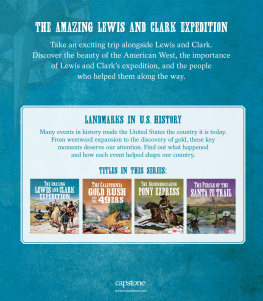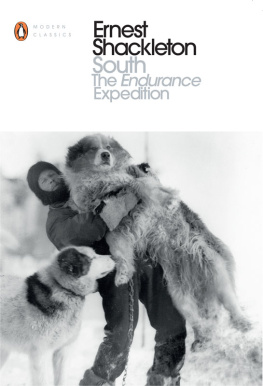Frank Horner is the author of The French Reconnaissance, an account of Nicolas Baudins explorations in Australian waters in the years 1801-1803. The book was the non-fiction selection for the Fellowship of Australian Writers Barbara Ramsden Award in 1987.
Dr Horner holds degrees from Sydney and London, and worked for many years in the Australian Bureau of Statistics. He served during World War II as a naval officer in small ships, mainly in New Guinea waters.
In the third year of the French Revolution the National Assembly sent the dEntrecasteaux expedition to the Pacific to search for the missing explorer La Prouse. Like the nation itself the expedition was divided by politics; there were both republicans and monarchists aboard. And besides servicemen there were civiliansthe naturalists, whose interests often cut across those of mariners.
The archives of the expedition, which include a wealth of candid and amusing private journals, reveal how dEntrecasteaux, despite tensions that strained personal friendships, commanded enough respect to keep the expedition operational. Though it found no trace of La Prouse it made valuable discoveries in geography, botany and anthropology.
The voyage, however, ended at Sourabaya in irreversible division with dEntrecasteaux dead, the arch-monarchist dAuribeau in command and the French receiving after two years their first news from home of regicide, terror and war. The narrative concludes by tracing the adventurous paths taken by survivors to reach home, and the stratagems they used to save the records of the expedition.
Looking for La Prouse
FRANK HORNER
Looking for La Prouse
DEntrecasteaux in Australia
and the South Pacific
1792-1793
MELBOURNE UNIVERSITY PRESS
Melbourne University Press
PO Box 278, Carlton South, Victoria 3053, Australia
First published 1995
First paperback edition 1996
Text Frank Benson Horner 1995
Design and typography Melbourne University Press 1995
The first edition of this book was published as number seven in the second Miegunyah Press series, the establishment of which was made possible by bequests under the wills of Sir Russell and Lady Grimwade.
This book is copyright. Apart from any use permitted under the Copyright Act 1968 and subsequent amendments, no part may be reproduced, stored in a retrieval system or transmitted by any means or process whatsoever without the prior written permission of the publisher.
Printed in Australia by Brown Prior Anderson Pty Ltd
National Library of Australia Cataloguing-in-Publication entry
Horner, F. B. (Frank Benson), 1917-
Looking for La Prouse; DEntrecasteaux in Australia and the South Pacific, 1792-1793.
Bibliography.
Includes index.
ISBN 0 522 84758 7 (pbk.).
ISBN 0 522 84451 0
1. La Prouse, Jean-Franois de Galaup, comte de, 1741-1788. 2. Entrecasteaux, Antoine Raymond Joseph de Bruni, chevalier d, 1737-1793Voyages. 3. Voyages and travels. 4. Natural history Oceania. 5. AustraliaDiscovery and exploration. 6. OceaniaDiscovery and exploration. I. Title.
910.91648
List of Illustrations
Plates
Jean-Franois Galaup, comte de La Prouse
National Library of Australia
Charles Pierre Claret, comte de Fleurieu
National Library of Australia
Antoine-Joseph-Bruny dEntrecasteaux
National Library of Australia
Jacques-Julien Houtou de Labillardire
National Library of Australia
Recherche and Esprance under way
Muse de la Marine
Eucalyptus globulus, or Tasmanian bluegum
National Library of Australia
Banksia repens, or Creeping banksia
National Library of Australia
Aborigines of Van Diemens Land preparing their meal
National Library of Australia
Double canoe of the Friendly Islands
National Library of Australia
Inauguration of the La Prouse monument at Vanikoro
National Library of Australia
Maps and line drawings
Esprance, sail plan
Esprance, inboard profile, mid-section and deck plans
Itinerary in the kings instructions
Track chart, April to September 1792
Landfall at Van Diemens Land, 21 April 1792
DEntrecasteaux Channel south
New Caledonia
Track chart, October 1792 to October 1793
Cape Leeuwin to Cape Adieu
DEntrecasteaux Channel north, Derwent River and Frederick Henry Bay
Santa Cruz
Solomon Sea and surrounding lands
Boutoun Strait, September and October 1793
Preface
The expedition ordered by the National Assembly in 1791 in the name of a king who was a virtual prisoner, to seek traces of a lost naval hero, was one of the largest missions of exploration ever mounted by the French. Its leader dEntrecasteaux seems to have remained a favourite in France, though his quest for La Prouse ended in failure, with much loss of life. Like his three French predecessors on Australian coasts and his successor Baudin, dEntrecasteaux did not live to see France again.
He has had several chroniclers in France. Two survivors of his voyage wrote their sometimes divergent accounts of it: the botanist Labillardire in his Relation (1799), and its final commandant Rossel who edited dEntrecasteauxs journal to produce the official Voyage (1808). Drawing on the recollections of other survivors, Captain Frminville published his account in 1838, to supplement Rossel and refute Labillardire. A particularly vivid story of the expedition is contained in Jurien de la Gravires Souvenirs dun amiral (1860), a quasifictional narrative by the son of a participant, based on his fathers journals. Hulots biography of dEntrecasteaux appeared in 1894, and Benoit-Guyods narrative of the expedition in 1945. Two excellent recent works have renewed French interest in dEntrecasteaux: the lively biography by Admiral Maurice Dupont (1983), and the extremely detailed and scholarly account of the expedition by the archivist Dr Hlne Richard (1985).
In English, apart from three translations of Labillardires Relation published in London in 1800, no book specifically on the expedition itself has appeared. Hogg wrote a paper for the Royal Society of Tasmania (1937), John Dunmore included an excellent chapter on dEntrecasteaux in his French Explorers in the Pacific (Vol. 1,1965), and Leslie Marchant a chapter on the Western Australian survey in France Australe (1982), Brian Plomley and Josiane Piard-Bernier have recently made use of the archives of the expedition, now on microfilm in several Australian libraries, to publish a detailed account of the expeditions two periods in Tasmania, with extensive translations of many of the journals and an introductory section on the expedition itself (The General, 1993). The microfilming of the archives, the result of a project funded by the Australian Bicentennial Authority in response to persistent advocacy by Mr Plomley, has made it possible for the present book on the dEntrecasteaux expedition to be written in Australia.
The expedition deserves to be better known among English-speaking readers. It made important discoveries in Tasmania, Western Australia and Papua New Guinea, recorded in beautiful and precise maps. Its operations in Australian waters began a series of French expeditions that stirred the British to make counter-moves in colonial strategy. The expedition produced valuable contributions to the sciences of hydrography, marine astronomy and geomagnetism. Its principal botanist published the first flora of Australia, and its members left us the first detailed records of European contacts with the Aborigines of Tasmania. The expedition departed two years after the Bastille fell and spent the next two years completely without news from home. The twenty or so personal journals written on board, together with the two








